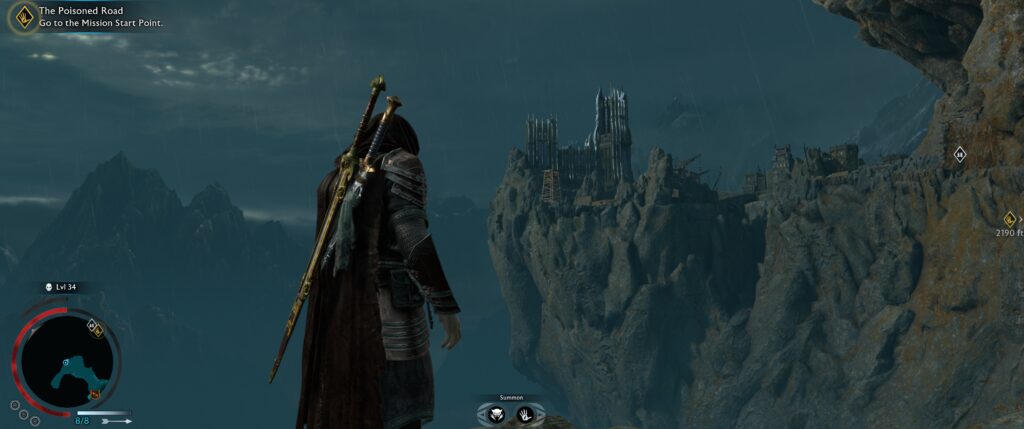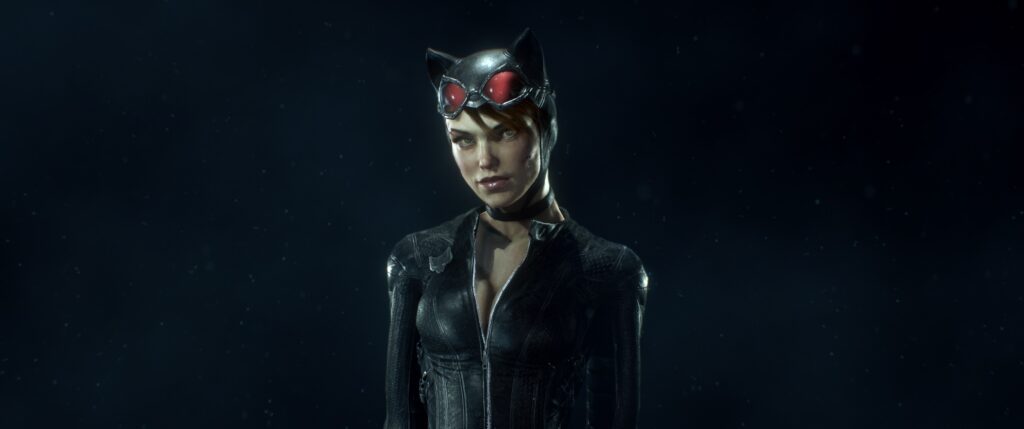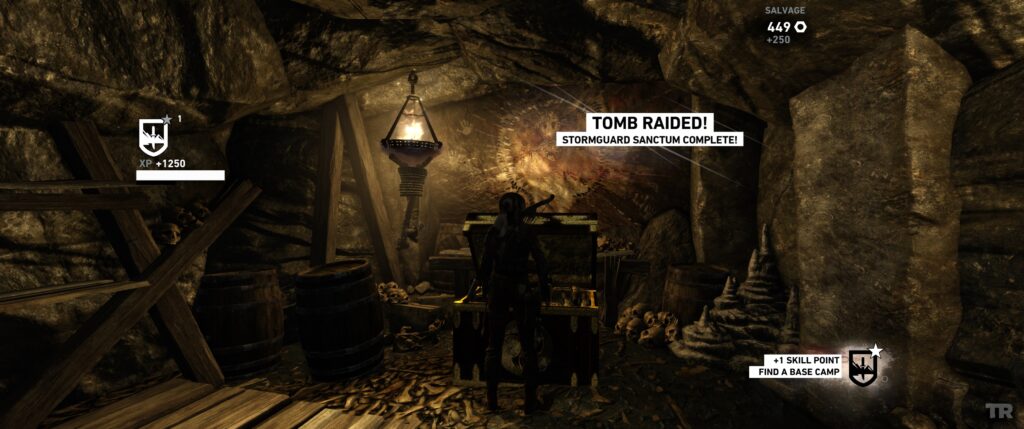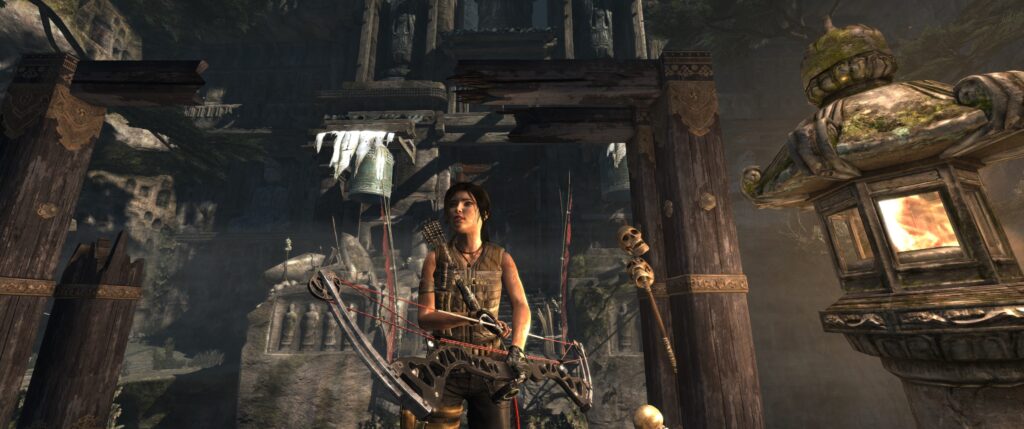As I just recently had the first big computer upgrade in almost a decade, I wanted to see how some games I’d previously played at release on low or medium settings looked today when on max settings. So I reinstalled Tomb Raider (2013), Batman: Arkham Knight and the Shadow of War, the sequel to Middle-earth: Shadow of Mordor. Only one of these was a new experience but I will qualify that by adding that they all fit into what I described as The Genre Amalgamation three years ago. I was also reminded in a recent video from David V. Stewart on Assassin’s Creed Shadows that he describes these games as “mud genre” which is a blunter but no less accurate way of describing them.
This post was also partly influenced by the disastrous launch of Suicide Squad: Kill the Justice League with visuals objectively worse than Batman: Arkham Knight; a game that came out almost a decade earlier among many other problems. This had me curious to see it again and I am struck at how great it still looks — even compared to much more recent games. That the former was made by the same studio is very illustrative of the rapid decline of major publishers and developers.
In fact, despite last year being a very good one, there is still a dearth of innovation evident in major releases and outside of advances in visuals, games play much as they did more than a decade ago which also explains why so many remakes and remasters are being done instead of new games. The only new “feature” that publishers seem to want to include is that of “live service”. And this “feature” is much to akin to almost any introduced by Microsoft in that it is usually to the detriment of the software. In terms of games, it just means publishers want you to pay for the game and then keep paying for it with microtransactions for cosmetic items and other such digital nonsense that will be lost when they inevitably shutdown the servers a few years later.
The purpose of this post isn’t to complain about current trends but merely to consider (or in two cases to reconsider), the above games.
It was important to mention live service games first because despite being enthusiastic about Shadow of Mordor on release, I avoided the sequel partially because of the live service features it included. This involved stuff like loot boxes but I’m not sure exactly how it worked because they were removed some years ago and the release I played now has little evidence of what was. Still, for a single-player game it remains overly bloated in terms of both content and file size. I don’t say content is a bad thing necessarily but when it involves repetitive missions littered throughout an unnecessarily large overworld, it quickly becomes a chore. The previous game was a little more restrained from memory.

Another aspect that had me initially avoid this game was the significant departure from Tolkien’s lore. One of the major side characters in this is a black soldier of Gondor. They try to explain this by having him be originally from Umbar which still does not explain it away. There is also a female soldier who at least passes for European and it is implied that they have romantic interest in one-another. Then there is Shelob who most people know was a monstrous spider that didn’t talk. In this game, Shelob can not only talk but is also able to transform into a female that looks and talks like a jilted wine-aunt with fading beauty. She actually has a significant role in the early part of the game and as is typical with modern story-telling, is made to be more sympathetic than she should be.

All of the above can be mostly overlooked though as even in the first game, it was best to just ignore the lore. What was particularly irritating was the unsatisfying ending to the story. This might sound contradictory given what I just stated about the lore but I do like to know I have finished a game. On reaching the game’s climax, I found there was in fact another ending to be found but that can only be seen by doing more of what I’d already done over again. This padding was probably included originally to keep people buying the loot boxes after finishing the story but even without the extra expense, it is still obnoxious to hide story content behind repetitive end-game content. Overall, the core gameplay is still fun and engaging but I’m not sorry I ignored this as long as I did.
Next I replayed Batman: Arkham Knight. The review linked above was certainly scathing but after playing the game again, I can’t say I have changed my opinion. The only thing I would change slightly is the score at the end as it deserves one more star. I absolutely stand by my criticisms even after playing the game at its very best. The review frequently mentioned the Batmobile which while certainly overused, I was fully prepared for this time. The main thing that bothered me on this run (which I did mention in the original review), were the frequent tutorials which are indeed appearing right up to the very end as stated.

Still, there are some aspects that can be better appreciated with what major publishers are doing today. It didn’t seem so ten years ago but having attractive female characters is certainly a plus. The deliberate uglification of society has certainly extended into game design so this was a refreshing reminder of what once was. The city still has a genuinely amazing level of detail and there is certainly a lot to do outside the main game. The DLC which I had not previously played, was very disappointing and I feel for anyone who paid for the season pass at the time. These were very brief stand-alone stories with a variety of different characters but it is nice to have them selectable in the AR missions as well.

Unfortunately, like Shadow of War, it also hides the final piece of story behind side content and as this involves hunting collectibles, it is even worse. This was also a complaint in the review and it is just as obnoxious a design decision today. Still, I’d say it is still an enjoyable enough game if you’re patient with some of the irritating design decisions.
Lastly, the 2013 Tomb Raider reboot which I am still running through as of writing. This is the oldest of these games and as I noted in my review, was one that it tried to combine everything that defined the average Xbox 360/PlayStation 3 third-person action game and really set a bad precedent in this regard. I did like the game though and also the immediate sequel which I also reviewed. I didn’t like the third game, Shadow of the Tomb Raider at all and barely even remember playing it. This is also another game that I was reminded of for all the wrong reasons. Namely, that Crystal Dynamics not only now rejects the original series by Core Design but by extension their early titles after they took over from Core.

Something has clearly changed with the company but the seeds of this change were certainly present in this title. They obviously wanted to make a more “empowered” Lara and certainly toned down the far more voluptuous figure she had in earlier games. This iteration of Lara is still attractive and retains at least some gameplay elements of the earlier titles. Given what Crystal Dynamics is saying now, it is still hard to see how “empowering” it is to watch a young woman get hurt, attacked and die in a number of rather gruesome ways as she does throughout this adventure. It would be interesting to see how they spun this being preferable to the tough, confident, intelligent and resourceful character found in all the games prior to this.

Even over ten years later, this game still looks great though some aspects of the visual design are showing their age. The main flaw with this and its direct sequel is that it is more an Uncharted game then a Tomb Raider game. And outside of remakes or remasters of the earlier games, it is unlikely that the original Lara Croft will be coming back in any future media so this may be as good as it ever gets if you’re not interested in the old titles.
One final observation to finish on is that these games all released roughly two years apart from 2013 until 2017 which makes them old games in what is a fast moving industry. Yet, were they play and look as good (if not better), than many releases today. They also all have very similar designs and not just because they are third-person actions games. They aptly demonstrate just how stagnant game design has become particularly with big-budget Western releases.
